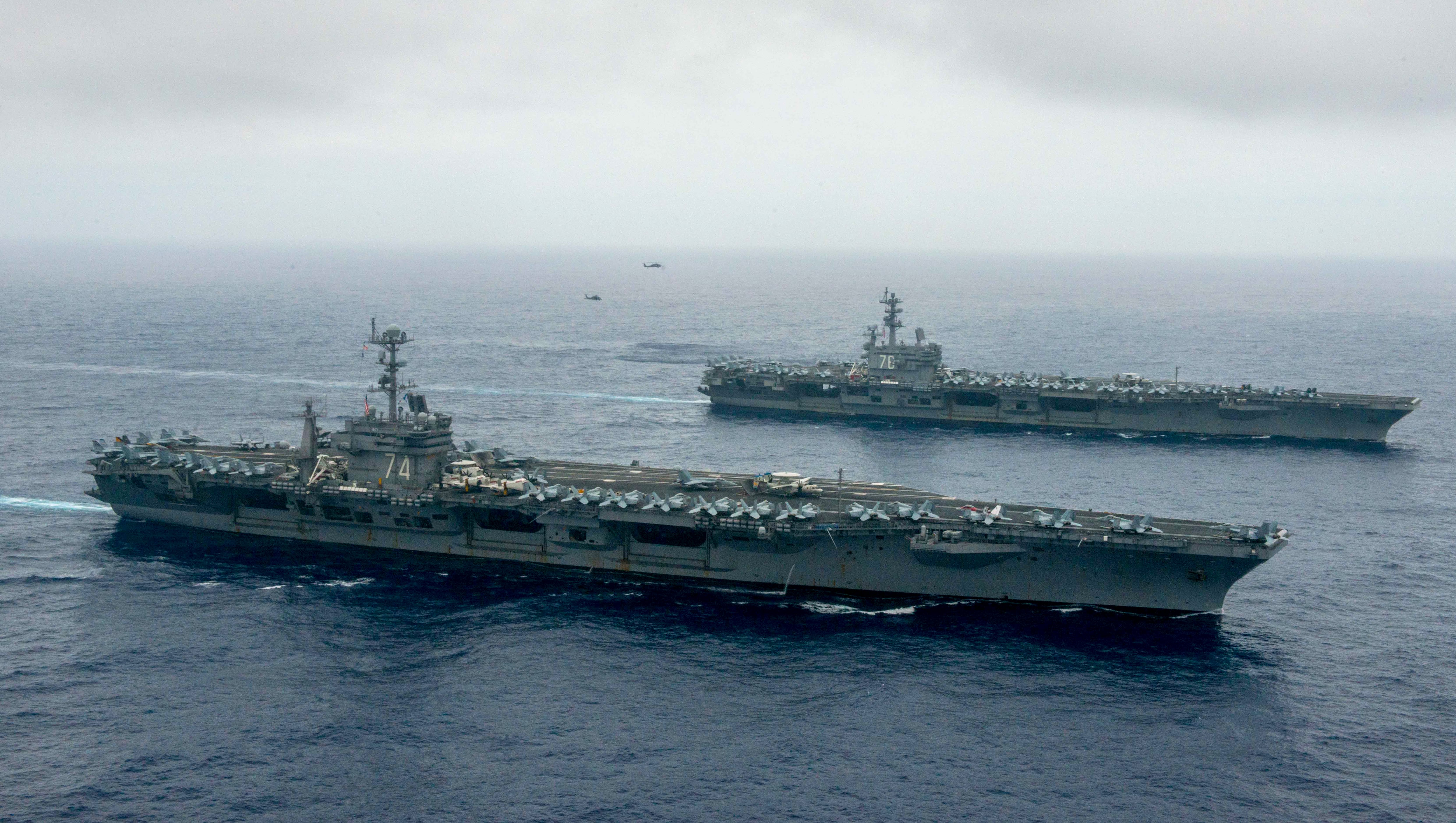After three months on station, the carrier John C. Stennis has departed the world's most contested body of water.
Stennis left the South China Sea on June 5 after arriving in early April in what was intended as a demonstration of the U.S. commitment to presence in the region after aggressive moves and island-building by China raised concerns among U.S. allies and partners there.
The months-long patrol was shadowed almost the entire time by Chinese People's Liberation Army-Navy vessels, and almost certainly raised the ire of Beijing. In May, the Chinese government cancelled a port visit in Hong Kong, saying it was "inconvenient" for the flattop to pull in.
Not long after departing the South China Sea, the Stennis participated in a massive show of force in the Philippine Sea as it rendezvoused with carrier Ronald Reagan. In a release, Navy Task Force 70 headlined the dual carrier flight operations as "Two carrier strike groups double down in Western Pacific," noting that this showcases "United States unique capability to operate multiple carrier strike groups in close proximity."
During the three months, Stennis frequently became a symbol of the U.S. response to increasingly aggressive Chinese moves across the region. China claims nearly all of the South China Sea as its sovereign territory and has reinforced its claims by constructing man-made islands on rocky outcroppings, reefs and atolls in the region. Its neighbors claim China is bullying them, and the U.S. has opposed what it sees as China's coercive tactics to enforce its claims.
While on patrol, Stennis has played host to some of the military's top brass, receiving visits from both the Chief of Naval Operations Adm. John Richardson and Defense Secretary Ash Carter, who brought along his Philippines counterpart for the trip.
Stennis departed June 5 and participated in an exercise with the Japanese Maritime Self-Defense Force and the Indian navy, and over the weekend it participated in the flight ops with the Reagan took time to do dual-carrier ops in the Philippine Sea with the carrier Ronald Reagan, said Lt. Clint Ramsden, a spokesman for U.S. Pacific Fleet. Reagan departed June 5 from its home port of Yokosuka, Japan, for its summer patrol.
"This is a great opportunity for us to train in a high end scenario." Rear Adm. John Alexander, the Reagan's strike group commander, said in the CTF 70 release. "We must take advantage of these opportunities to practice warfighting techniques that are required to prevail in modern naval operations."
The destroyer Spruance is currently on patrol in the South China Sea. The Spruance, which is part of a three-ship surface action group deployed to the Wwestern Pacific, has been in the South China Sea since June 8, Ramsden said.
China has been building artificial islands in the Spratley Islands on top of reefs and atolls to bolster its claims and to gain fishing and resource rights to most of the South China Sea.
More recently, the Chinese have signaled they may begin construction of a new island atop 140 miles off the coast of the Philippines capital called Scarborough Shoal, which lies only 140 miles from the Philippines' capital. An international court is set to rule soon on this dispute. China seized from the Philippines in 2012. That dispute is likely to soon be decided by an international court. The looming decision, along with stepped-up U.S. patrols, have led to mounting tensions in the disputed region. U.S. lawmakers are urging more of these patrols in an attempt to deter China from its island-building campaign.
David B. Larter was the naval warfare reporter for Defense News.





